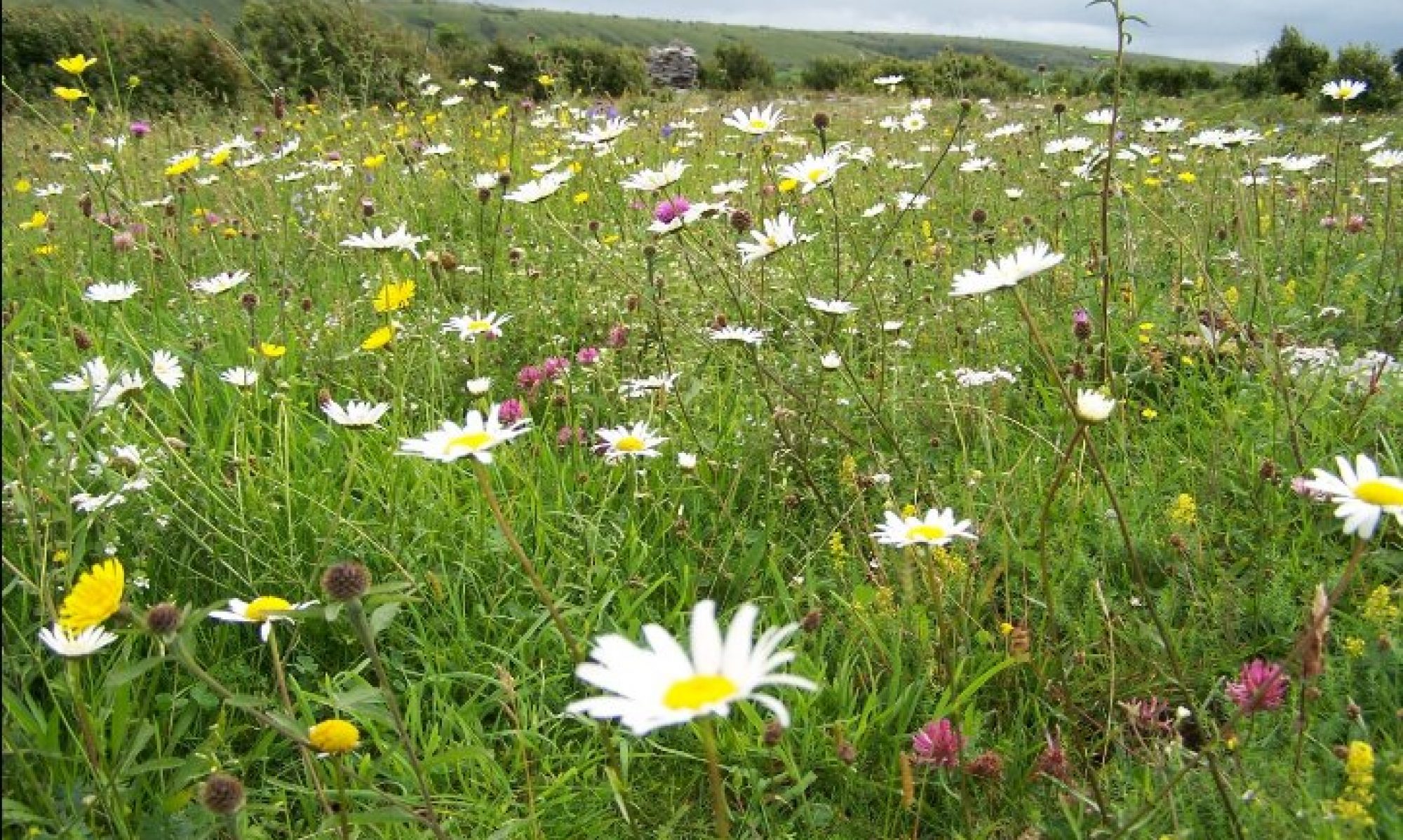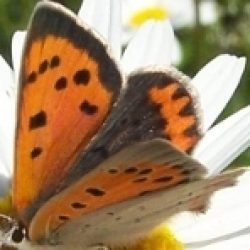Hedgerows are dripping with fruit, blackberries resplendent in bunches like grapes, nuts browning on Hazel, haws crimson in autumn sunlight, Dog-rose fruits glowing orange, wild Crab-apples larger than ever, all showing the results of a balanced summer: well-watered, warm and sunny.
I mention fruit because butterflies are resorting to hedgerows, enjoying the sugary juices. Remaining flowers, mostly Dandelion, Ivy, and Devil’s-bit Scabious, also continue to attract remaining butterflies.
But with cooling temperatures, longer nights and diminishing resources, what butterflies can we hope to see in October?
Few species can be found in abundance except in certain coastal areas where pre-migratory Red Admirals gather for a final feed before departure. Look for them on Ivy and in orchards, where fallen fruit or fruit opened by wasp jaws leaks their sweetness. Elsewhere, Red Admiral will be found in low numbers, but it remains a presence in suitable hedgerows during October.
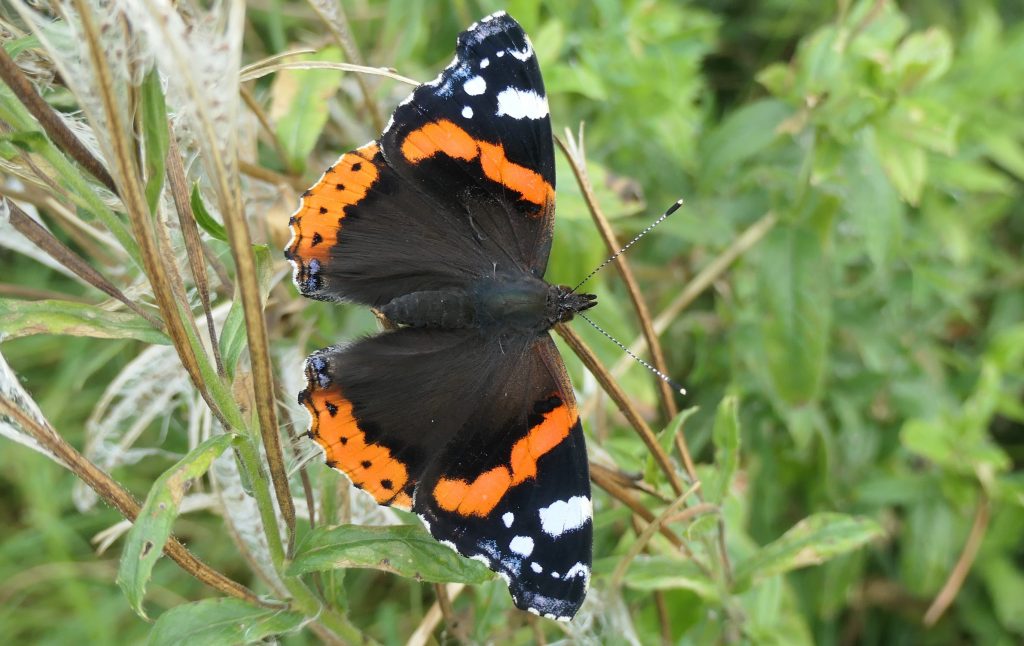
The Comma is another late emerger. It is probably our latest emerging butterfly now. They continue to fly throughout October, feeding on blackberries and Ivy before finding a sleeping place deep in woodland, deep hedges and scrub where they remain until next March. The autumn Comma is much deeper in colour than the direct-breeding summer generation. The colour differences are striking, but some paler Comma hatch in autumn, but these are rarely as golden as their summer predecessors.
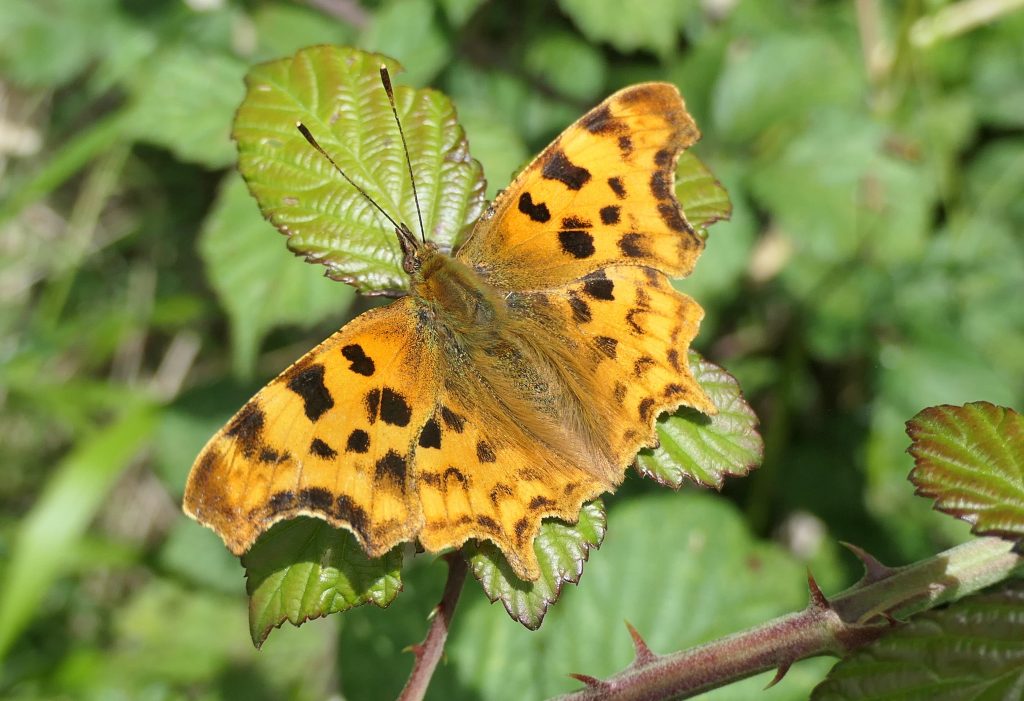
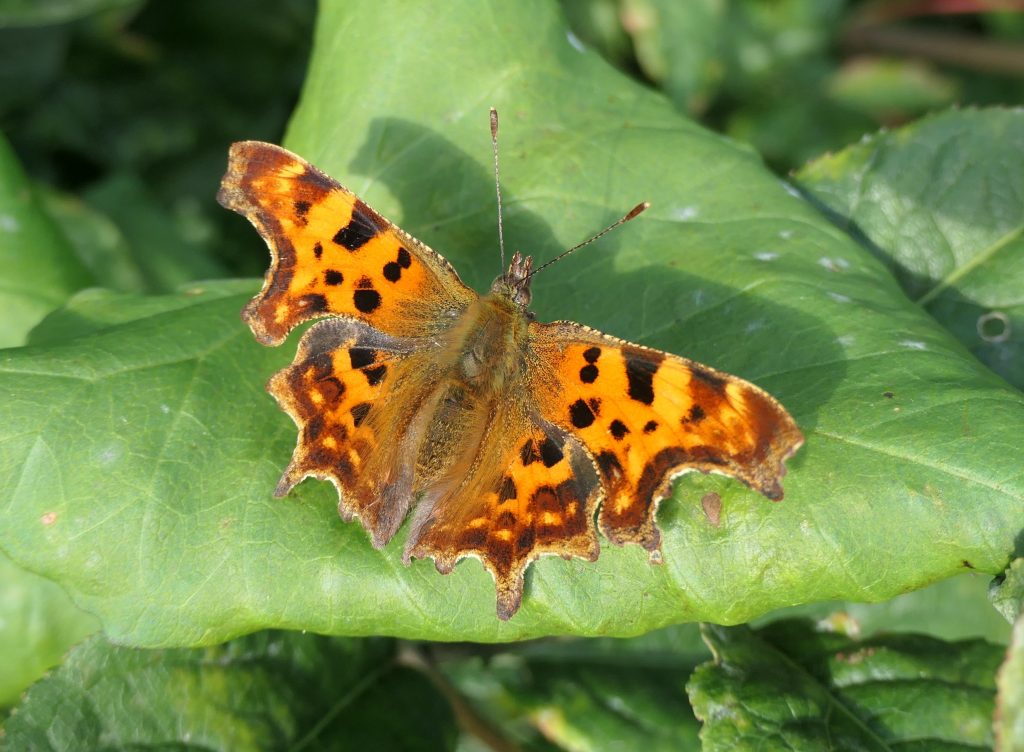
This year, the Small Copper produced an autumn generation, a third brood. These are mostly feeding on Dandelions but also on blackberries. These are breeding, not hibernating or migrating. After mating, females feed for several days before beginning their task of locating suitable sorrels to lay their eggs. The resulting caterpillars feed until entering a hibernation state. Feeding is resumed in spring when daylight increases and the sorrel shows fresh growth. The adult Small Coppers next spring are likely the offspring of two generations, of the second and third brood of 2025, for not all second-generation adults likely produced eggs that resulted in adult butterflies in 2025.
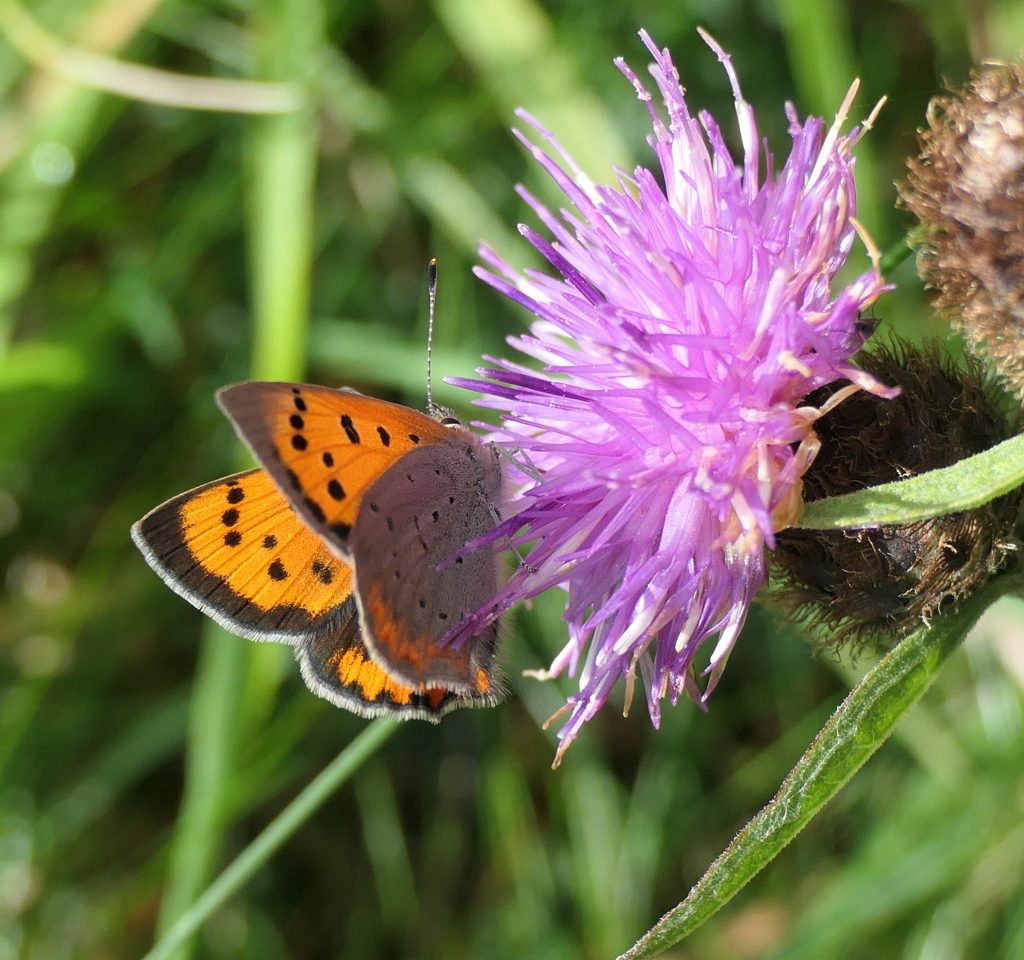
The Speckled Wood is still on the wing in October. These might be second-generation Speckled Woods or third-generation. This butterfly has an unusual brood structure, which makes the brood provenance of adults impossible to identify. A unique feature is its ability to pass the winter in the larval and pupal states. All the other Irish species pass the winter in a single life stage.
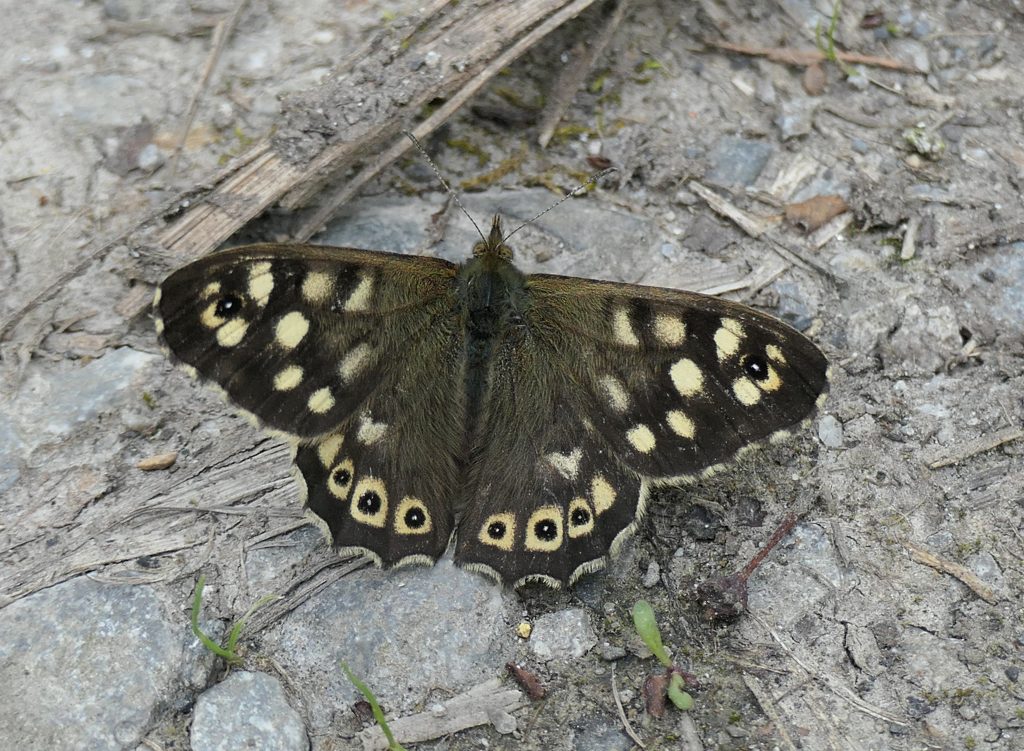
This year, excellent weather during August allowed over-wintering species that emerge in that month to complete their pre-winter feeding, so sightings of Brimstone, Small Tortoiseshell and Peacock will be few during October.
The occasional migrating Clouded Yellow will be seen. This is most often seen in October in Ireland, except in years when it arrives earlier and in abundance. Enjoy October.
All images © J. Harding
